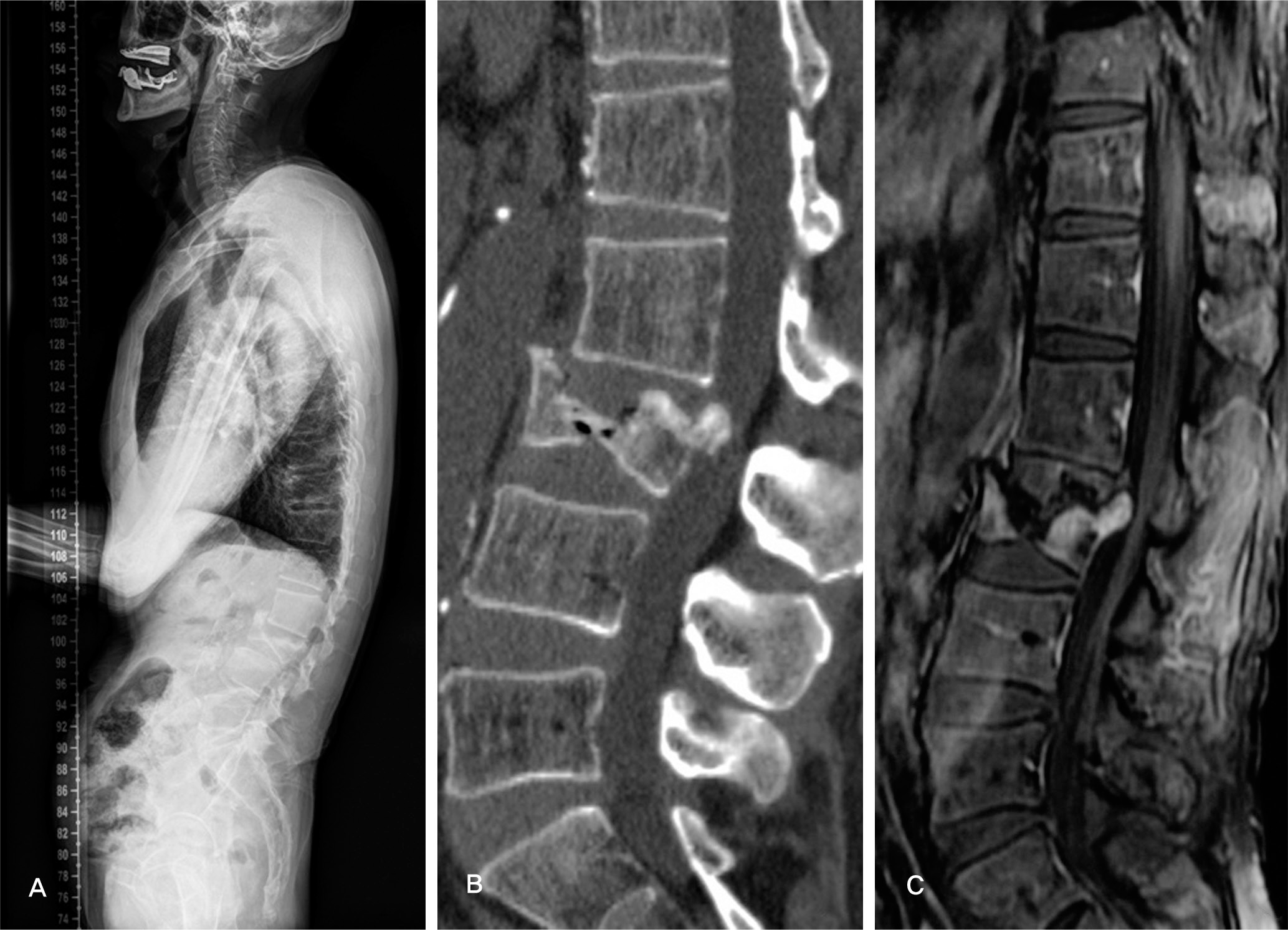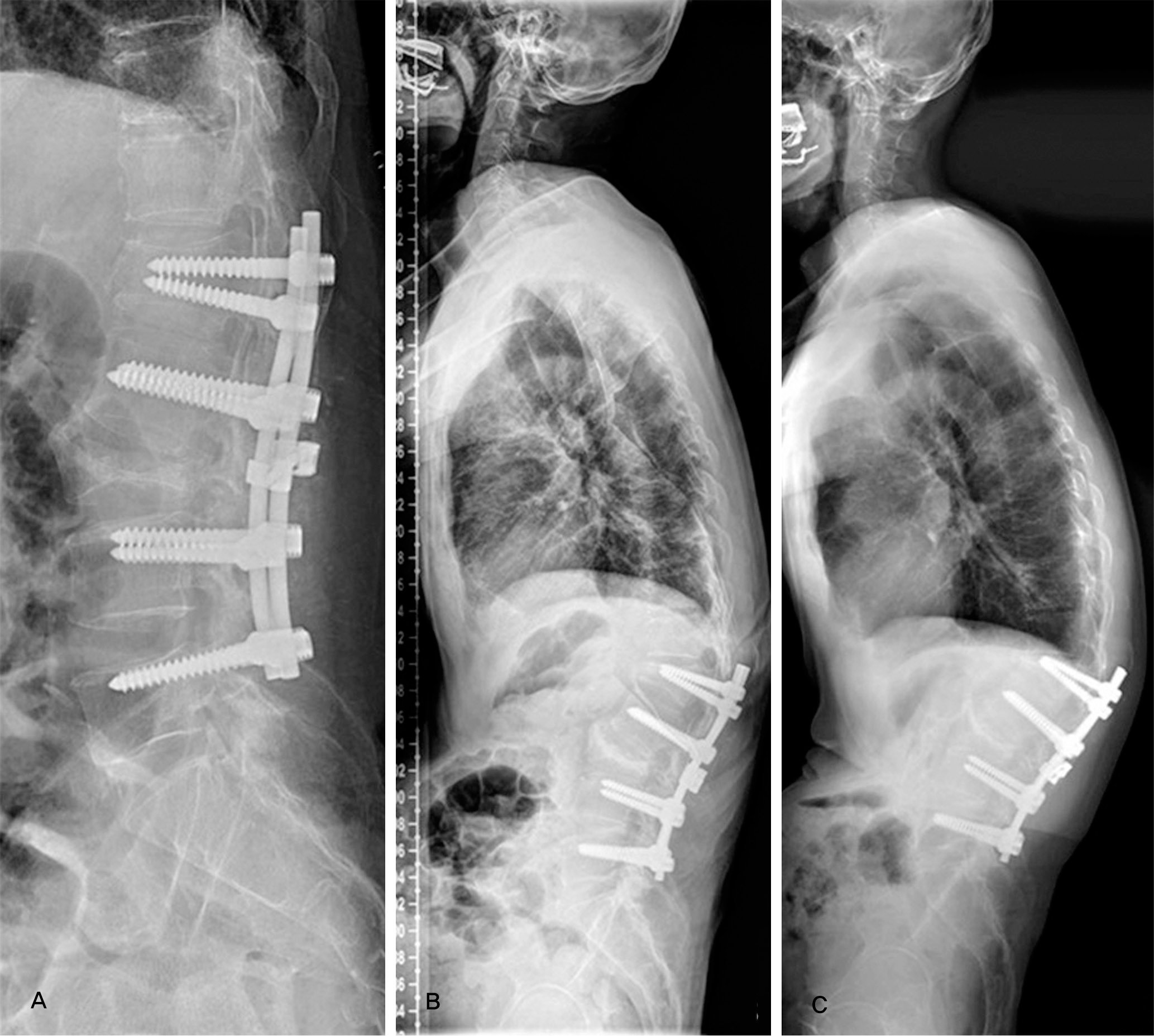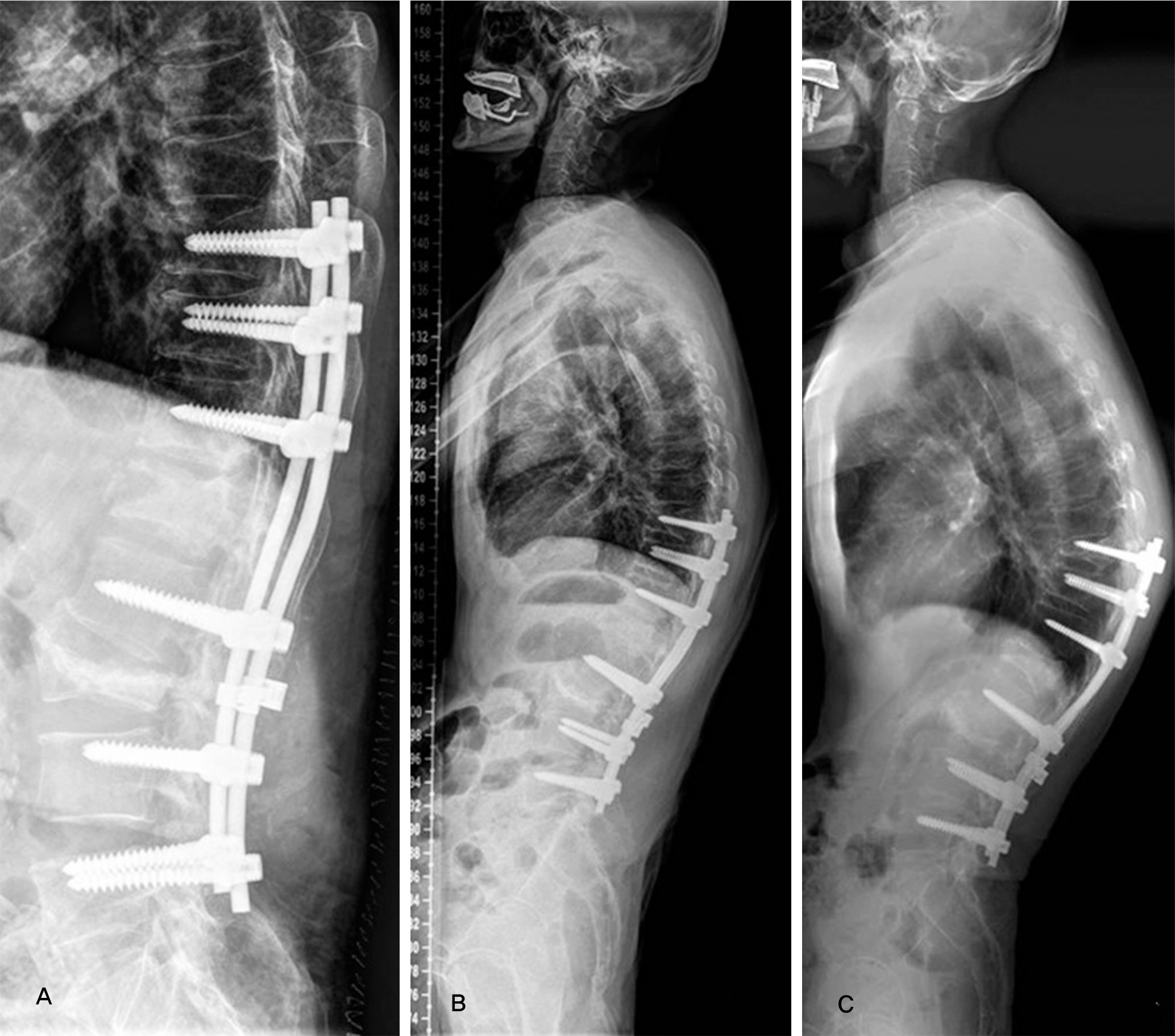Abstract
Objectives
This case report presents an elderly male who sustained compression fractures twice on the instrumented end vertebra following a spinal fusion with pedicle screws.
Summary of Literature Review
Because of its low incidence, there is considerable debate regarding an optimal treatment of adjacent segment fracture after long lumbar fusion. Almost all of the reports about adjacent segment fracture are about adjacent vertebral fractures rather than the instrumented vertebral fractures.
Materials and Methods
A 69 year-old male who was admitted with low back pains of no apparent physical injury underwent pedicle subtraction osteotomy and posterolateral fusion for L3 vertebral fracture and post-traumatic kyphosis. Extension of the fusion segment was performed two months after the initial operation to correct his compression fracture of the instrumented end vertebra, followed by conservative treatments due to a second compression fracture of the instrumented end vertebra two months after the second surgery.
REFERENCES
1. Glattes RC, Bridwell KH, Lenke LG, Kim YJ, Rinella A, Edwards C 2nd. Proximal junctional kyphosis in adult spinal deformity following long instrumented posterior spinal fusion: incidence, outcomes, and risk factor analysis. Spine (Phila Pa 1976). 2005; 30:1643–9.
2. Hibbs RA. An operation for progressive spinal deformity. New York Med J. 1911; 21:1013–6.
3. Park P, Garton HJ, Gala VC, Hoff JT, McGillicuddy JE. Adjacent segment disease after lumbar or lumbosacral fusion: review of the literature. Spine (Phila Pa 1976). 2004; 29:1938–44.

4. Watanabe K, Lenke LG, Bridwell KH, Kim YJ, Koester L, Hensley M. Proximal junctional vertebral fracture in adults after spinal deformity surgery using pedicle screw con-structs: analysis of morphological features. Spine (Phila Pa 1976). 2010; 35:138–45.
5. Etebar S, Cahill DW. Risk factors for adjacent-segment failure following lumbar fixation with rigid instrumentation for degenerative instability. J Neurosurg. 1993; 90(2 Suppl):163–9.

6. Lewis S, Abbas H, Chua S, et al. Upper Instrumented Vertebral Fractures in Long Lumbar Fusions: What Are the Associated Risk Factors? Spine (Phila Pa 1976). 2012; 37:1407–14.
7. Yang SC, Chen HS, Kao YH, et al. Clinical evaluation of percutaneous vertebroplasty for symptomatic adjacent vertebral compression fracture. J Spinal Disord Tech. 2012 Oct 17. [Epub ahead of print].

Fig. 1.
(A) Preoperative lateral entire spine x-rays demonstrating a collapse of the L3 vertebral body and kyphosis. (B) Computed tomography revealing a canal involvement(50%) of the posterior fragment. (C) MRI views showing acute L3 vertebral fracture with high signal intensity and the dural sac compression.





 PDF
PDF ePub
ePub Citation
Citation Print
Print




 XML Download
XML Download